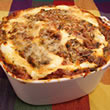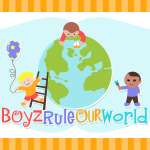As the school year starts rolling around and for some has even started, I am starting to plan my meals for the weeks. I never froze meals before but now that my kids are getting older, I think this idea will work a lot better for our family.
Making meals in advance can be as simple as doubling a casserole recipe or tossing an extra meatloaf into the oven.
 |
Before You Freeze
Before freezing hot food, it's important to let it cool down. Heat will raise the temperature of the freezer; and the food will not freeze uniformly, the outer edges of the hot dish will freeze hard quickly while the inside might not cool in time to prevent spoilage.
There are just a few things to keep in mind:
- Cool precooked dishes as quickly as possible before they are placed in the freezer.
- For fastest cooling, place the pan of hot food in a sink filled with ice water (or in a larger pan of ice water). If you're cooling a soup, stew, or sauce, stir occasionally to help it cool evenly.
- Once the dish is cooled, portion it into meal-sized containers or packages. Label and date the containers. Place them in a single layer in the coldest area of your freezer until completely frozen. Rearrange as necessary.
Tips for Freezing Foods
Poorly wrapped foods run the risk of developing freezer burn and unpleasant odors from other foods in the freezer. Follow these simple wrapping and container tips to ensure the quality and safety of your food:
- Use only specialty freezer wrappings: they should be both moisture-proof and vapor-proof.
- Leave as little air as possible in the packages and containers. When freezing liquids in containers, allow a small amount of head room for expansion. When using freezer bags, be sure to remove as much air as possible before closing.
- Wrap solids foods like meats and baked goods tightly in foil before you bag them.
- Use rigid containers with an air-tight lid and keep the sealing edge free from moisture or food to ensure proper closure.
- Secure wrapped packages and containers with freezer tape, and write the dish and the date on the tape with a marker.
- In many cases, meats and fish wrapped by the grocer or butcher need no extra attention before freezing. However, meat wrapped on Styrofoam trays with plastic wrap will not hold up well to freezing. If the food you want to freeze was not specially wrapped, then re-wrap them at home.
- Freeze in small containers with no more than a 1-quart capacity to ensure that freezing takes place in a timely manner (i.e., within four hours). Food that is two inches thick will take about two hours to freeze completely.
Thawing Frozen Foods
With the exception of muffins, breads, and other baked goods, do not thaw foods at room temperature. Bacteria can grow in the thawed portion of prepared foods, releasing toxins that are unsafe to eat even after cooking.
To ensure that your food is safe to eat, follow one of these proper ways to thaw:
In the refrigerator: This is the slowest but safest thawing technique. Small frozen items might thaw in a few hours, while larger items will take significantly longer--overnight and then some.
In cold water: Place the frozen food in a leak-proof bag and place in a large container of cold water.
In a microwave on the defrost setting: Plan to cook the food immediately after it has thawed in a microwave, because some areas of the food might have begun cooking during the defrost cycle.
Best if Used By:
Although freezing keeps food safe for an indefinite amount of time, eventually the flavor will be affected. If the food is obviously damaged (shriveled, with white or frosty spots) it should be discarded.
This chart lists recommended storage times for popular precooked foods--casseroles, soups, lasagna--to ensure high-quality results:
| Type of Food | |
| Tomato/vegetable sauces | 6 months |
| Meatloaf (any type of meat) | 6 months |
| Soups and stews | 2-3 months |
| Poultry and Meat Casseroles | 6 months |
| Poultry (cooked, no gravy) | 3 months |
| Poultry (with gravy/sauce) | 5-6 months |
| Meatballs in sauce | 6 months |
| Pizza dough (raw, homemade) | 3-4 weeks |
| Muffins/quick breads (baked) | 2-3 months |
Don't Crowd the Freezer
A temperature of 0 degrees F (-18 degrees C) is best for maintaining food quality. Proper air circulation is key to keeping your freezer operating at maximum efficiency.
Freezing does not kill bacteria, yeast and molds that might be in your foods--it merely holds them at bay by keeping them inactive. If the freezer's temperature is disturbed often or altered for an extended period of time (such as a door left ajar or power outages) these microbes can compromise your food's safety.







































2 comments:
Thanks for the tips.
I freeze lasagna ALOT. We really need to get a stand alone freezer..
I never froz Lasagna. I am def going to try it out this yr. It is so easy to make.
Post a Comment